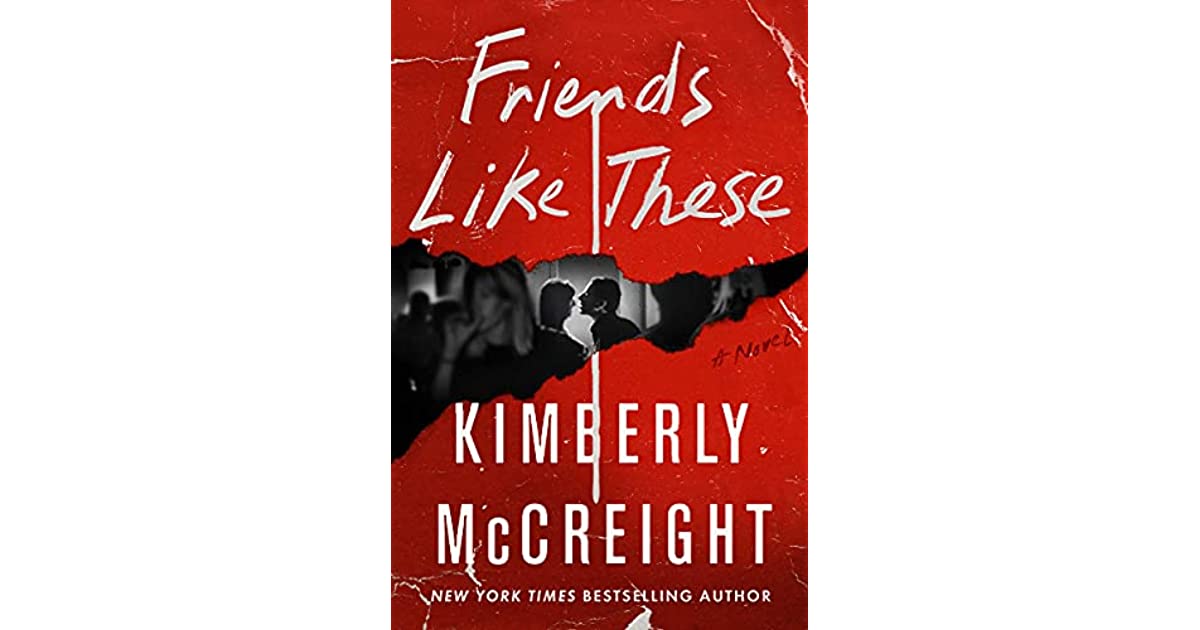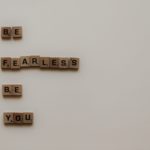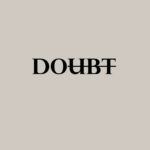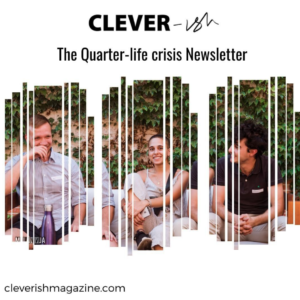The newly released novel Friends Like These is a thrilling tale that explores friendship, loyalty, secrets, and the realities of in-group and out-group dynamics. It’s full of suspense, intrigue, and layers that keep readers guessing and wanting more.
In this sit-down interview with New York Times best-selling author Kimberly McCreight about her book Friends Like These, she shares with Clever-ish her process of developing complex characters in the book, her approach to writing female characters, and her motivation to tell a story that explores the complexity of friendship.
There are so many moving parts in this book, but the reader never feels lost or overwhelmed. What was your process like creating this web of mystery and intrigue?
Well, thank you for starting the question with a compliment. From our discussion last time, I mentioned that I don’t outline my books in advance. This book was no different even though it does have a complicated structure.
Friends Like These is a story of a group of very close college friends who are now in their early thirties. They reunite at a lavish home owned by one of them in the Catskills in upstate New York. They reunite to stage an intervention for one of their friends in the group. And it’s an intervention that quickly goes terribly wrong. So when the book opens a car has been found deep in the woods, and one of the friends is dead inside and another one is missing. When a local detective turns up to investigate, it’s clear that the rest of the friends are hiding something. And the question is, did some conflict between the friends and the locals in town escalate into violence, or did secrets among the friends that have been long buried resurface this time with deadly consequences? So that’s the context of the book.
There are six-point of view characters. The five friends narrate the events leading up to the death in the car. And then the other half of the book is narrated by the detective. It is a complex structure but the complexity is diminished somewhat even though there are several narrators because the storyline is quite linear. It’s just moving forward in time. So although you’re changing point of view from character to character you’re just following a straight story of what happened over the weekend. And similarly, you’re following the detective’s investigation. The way I structured it helps ground the complexity of the point of view characters a bit because you know where you are depending on who is narrating. If you’re reading a narrative of one of the friends, you know, you’re in the past and if you’re reading the detective’s narrative, you know, you’re after the fact because she’s investigating the murder. I structured the book this way to give the reader clarity.
How much of the structure and characters were preplanned?
As I always do, I wrote my way into the book. I knew the vague questions I had in mind about friendship and the dark side of friendship, and more broadly about in-group out-group dynamics. The characters are a group of hipsters from the city who go to this rural, conservative, and white community upstate. I knew the broader questions I wanted the book to address and I also knew what the big twist would be. But I still had to write my way through the story. Part of that process is getting to know the point-of-view characters and learning them. In the first draft, as I put them in scenes, I get to know who they are and I refine my story around who I have learned them to be in subsequent revisions. This means that my process of revision is extremely extensive. When I revise a book, I rewrite the entire thing 10 or 12 times, and this book was no different. Some major things became incredibly important in the book that I discovered going into it which for me is the most exciting part of the process. When the story surprises me and when I learn something new about my characters, that is the magic of it.
View this post on Instagram
Friends Like These is a story of betrayal and mystery, but it’s also a resounding theme on strong women taking control of the narrative. Was this a deliberate addition or does your writing just naturally gravitate towards that?
I think that my writing naturally gravitates there. This is the first time I’ve actually had any male point-of-view characters. So it was a new experience to write from the perspective of men and my stories, in general, are always from a female perspective. I feel more intimately connected to female characters and my female characters are as complex as women are in the world. I never tell myself “now let me make a strong woman” because most women are quite strong. So representing us as we are doesn’t take any effort on my part.
Let’s talk about Detective Julia Scott. Several characters can qualify as protagonists in Friends Like These but she’s probably the most resounding lead who is formidable and grounded even though she’s also flawed in her own way. What was the motivation for this particular character?
Yeah, I love Julia. I have a soft spot for her. She was a character that I got to know her role in the book as I was writing her. I don’t want to reveal any spoilers but she definitely plays a very significant role in the book and I will say that that came as a surprise to me. In my very early drafts that was not something that I necessarily set out to be true but as I got to know her and tried to understand what I was doing, it became clear.
There’s this push and pull with writing where you’re kind of doing things in this subconscious way and trying to figure out why you’re doing it. This to me is the most interesting part of writing and sometimes the most interesting parts of your story exist in that space. You have to excavate and ask questions like ‘why am I putting her here?’ and ‘why is she this way?’. I knew definitely that she was that way so the question was why she was that way. And I spent a lot of time asking myself the question ‘why would they be this way?’ about all my characters. I think that some of the best storytelling comes from figuring out the answer to this question.
You went to Vassar college just like your main characters. Did you base any of these characters on specific people?
View this post on Instagram
(Laughs) “Yes. All my friends are murders and this is me pointing the finger at all of them.” You know, all the characters are very much an amalgam of my friends. I took certain traits from one and combined them with traits from another. What’s very true is the intense love the friends felt for each other. They knew each other back in college and developed an intense bond. I think a lot of people develop similar bonds in college when they make friends particularly if they all come from troubled backgrounds they were trying to break away from. In friend groups like this, you became each other’s family while also trying to figure out who you are as an individual. I was just talking to two of my college friends yesterday and I talk to them all the time and they play very important roles in my life.
In friend groups like this, it also can create a dynamic where you have a bit of groupthink where there’s not a lot of critical thinking about what the other members in your group are doing because you’re too enmeshed. With this book, I wanted to explore the idea of being so close with your friends that it’s hard to separate yourself and not just agree with all of their choices.
Which of the characters is your favorite?
I think Julie is my favorite character. She’s such a fighter. She fights against herself and the world and I have a lot of sympathy for that. But I also really do love all the friends in their own way too. I think Jonathan might be one of my favorite characters out of the friends.
And which of the characters are you most like?
Probably Stephanie. If I was in that group of friends. The friends are a bit typical. There’s the wild child, there’s the good one, there’s the straight shooter who gives you good advice. And I think a lot of groups of friends have those people. And I would say that I was Stephanie. I was the person who was in the library late that you would go find for advice at 1:00 AM. I was also very quick to sort everyone else’s problems out when I had plenty of problems of my own, which is a little bit of Stephanie. As I was writing some of her parts I was thinking ‘this sounds a lot like me.’
This is a fun read, the plot is genius and I think the takeaway message is open to interpretation, but what would you say is the overarching message of the book?
I think the overarching message is to question the idea of what loyalty means. And whether or not there’s a dark side of that. I like to think of my books as posing questions rather than providing messages or answers. I don’t think there is a clear answer to that question ‘how much loyalty is too much?’. That’s a question for everyone to answer. The book allows you to look at the complexity of friendship. Also more broadly, friendship is a proxy for in-group and out-group dynamics. We are very divided as a culture right now and I think there’s a parallel in the book to that idea. The idea of being part of a group. We are a part of a friend group but we are also a part of bigger groups within society that separate us and that sometimes creates a skewed frame of reference for what right-doing and wrongdoing are. So I want readers to question those ideas rather than the book providing a clear answer to them.
Get a copy of Friends Like These on Amazon














